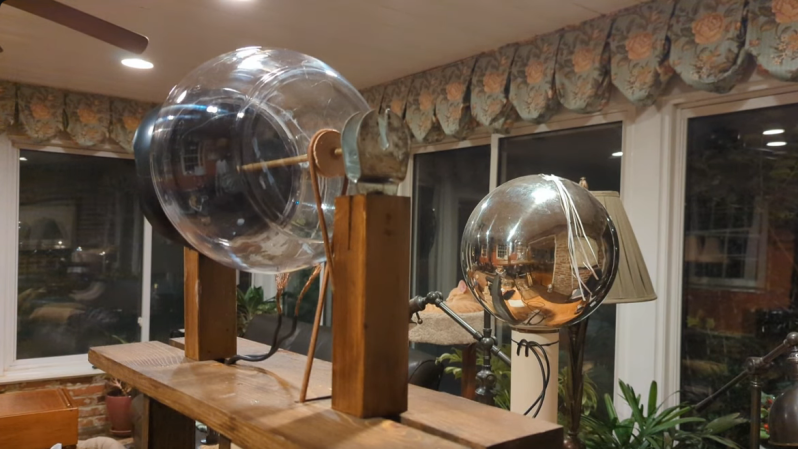Bits of material levitating against gravity, a stream of water deflected by invisible means, sparks of light appearing out of thin air; with observations like those, it’s a wonder that the early experiments into the nature of electricity progressed beyond the catch-all explanation of magic. And yet they did, but not without a lot of lamb’s bladders and sulfur globes, and not a little hand waving in the process. And urine — lots and lots of urine.
Looking into these early electrical experiments and recreating them is the unlikely space [Sam Gallagher] has staked out with the “Experimental History of Electricity,” a growing playlist on his criminally undersubscribed YouTube channel. The video linked below is his latest, describing the apparatus one Francis Hauksbee used to generate static electric charges for his early 18th-century experiments. Hauksbee’s name is nowhere near as well-known as that of Otto von Guericke or William Gilbert, who in the two centuries before Hauksbee conducted their own experiments and who both make appearances in the series. But Hauksbee’s machine, a rotating glass globe charged by the lightest touch of a leather pad, which [Sam] does a fantastic job recreating as closely as possible using period-correct materials and methods, allowed him to explore the nature of electricity in much greater depth than his predecessors.
But what about the urine? As with many of the experiments at the time, alchemists used what they had to create the reagents they needed, and it turned out that urine was a dandy source of phosphorous, which gave off a brilliant light when sufficiently heated. The faint light given off by mercury when shaken in the vacuum within a barometer seemed similar enough that it became known as the “mercurial phosphor” that likely inspired Hauksbee’s electrical experiments, which when coupled with a vacuum apparatus nearly led to the invention of the mercury discharge lamp, nearly 200 years early. The more you know.
Thanks to [RoGeorge] for the tip.
















Please be kind and respectful to help make the comments section excellent. (Comment Policy)